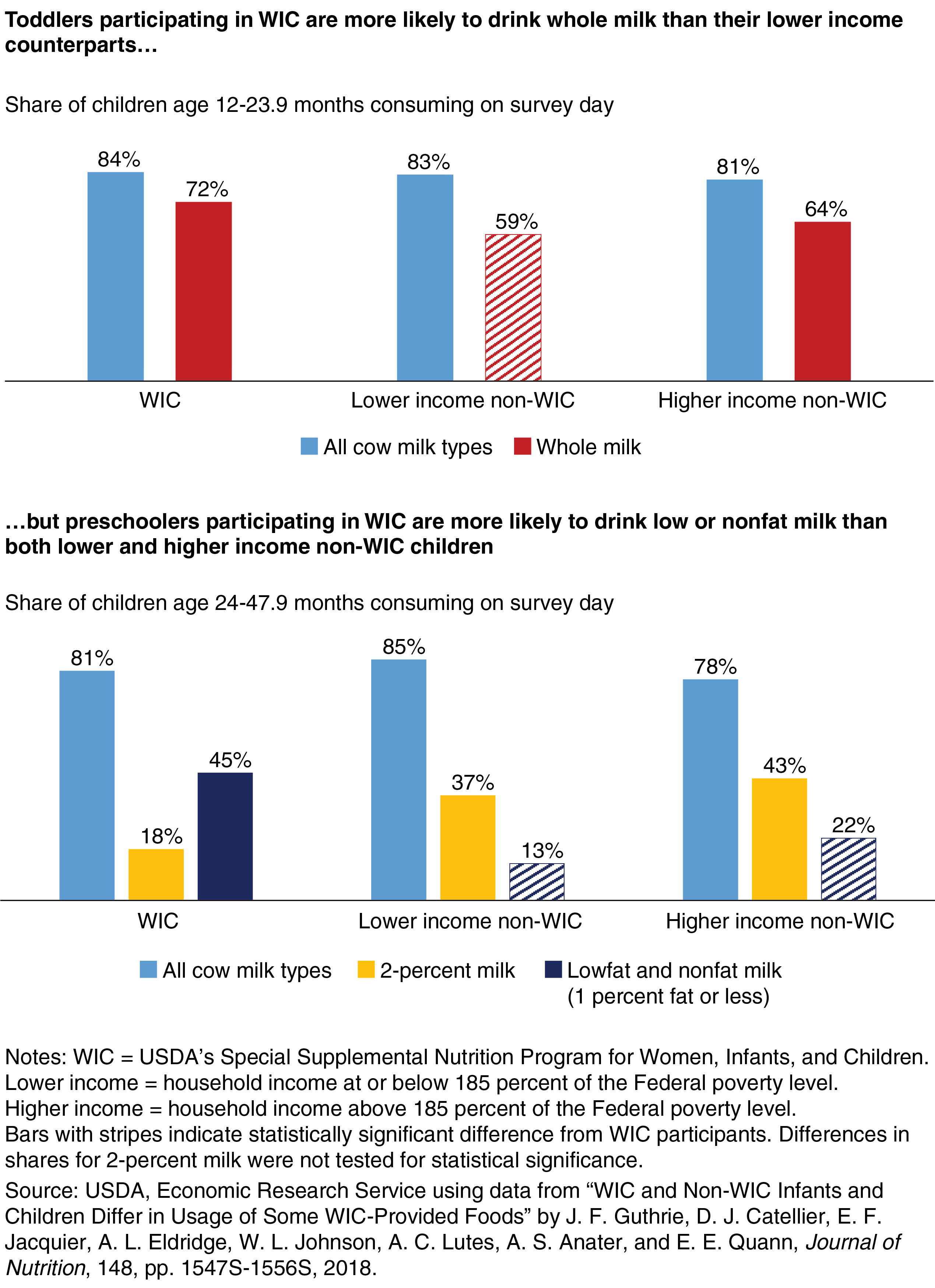
Preschoolers Participating in the Special Supplemental Nutrition Program for Women, Infants, and Children (WIC) Are More Likely to Drink Low or Nonfat Milk Than Their Non-WIC Counterparts
- by Joanne Guthrie
- 5/4/2020
Preschoolers in USDA’s Special Supplemental Nutrition Program for Women, Infants, and Children (WIC) are more likely to drink low- or nonfat milk than other kids their age, according to a study by a USDA, Economic Research Service (ERS) researcher and non-ERS colleagues.
WIC provides low-income, nutritionally at-risk pregnant, breastfeeding, and postpartum women; infants; and children under 5 years of age with packages of supplemental foods selected to meet their nutritional needs. Participants can obtain these foods at authorized grocery stores, paying with WIC-provided electronic benefit cards or vouchers. WIC participants also receive nutrition education and referrals to health care and social services.
In 2009, USDA updated the WIC food packages to align with recommendations of the Federal Dietary Guidelines for Americans and infant feeding guidelines of the American Academy of Pediatrics. The food package updates support public health objectives to promote children’s health and development while reducing risk of obesity.
Consistent with expert advice, whole milk was provided to toddlers from 1 year up to 2 years of age. For preschoolers age 2-4 years, low- or nonfat (1 percent fat or less) milk became the standard milk choices provided. WIC provides nutrition education to support this change, stressing that low- and nonfat milk include all the protein, vitamins, and minerals found in whole milk, and help meet recommendations to limit consumption of saturated fat.
Using national consumption data from the Nestlé Research Foundation’s 2016 Feeding Infants and Toddlers Study (FITS), an ERS researcher and non-ERS collaborators compared milk choices of a nationwide sample of children between 1 and 4 years of age (12 to 47.9 months). FITS recorded the specific foods consumed by each child over a 24-hour period, along with information on WIC participation, household income, and other socioeconomic characteristics.
The researchers divided children who did not participate in WIC into two subgroups: a lower income group living in households with incomes at or below 185 percent of the Federal poverty guideline (the income criterion for WIC) and a higher income group living in households with incomes above this cutoff.
About 80 percent of all children consumed some type of cow’s milk on the day of the survey. Across all groups, most of the children age 12-23.9 months drank whole milk, although a smaller share of lower income non-WIC children (59 percent) drank it, compared with children participating in WIC (72 percent). The share of higher income non-WIC children age 12-23.9 months who drank whole milk was not statistically different from their WIC counterparts.
For children age 24-47.9 months, a higher share of WIC-participating children drank low- and nonfat milk (45 percent) on the survey day than nonparticipants in either income group (13 and 22 percent). For nonparticipants, 2-percent milk was their most common milk choice.
This article is drawn from:
- “WIC and Non-WIC Infants and Children Differ in Usage of Some WIC-Provided Foods”. (2018). by Joanne F. Guthrie, Diane J. Catellier, Emma F. Jacquier, Alison L. Eldridge, Wendy L. Johnson, Anne C. Lutes, Andrea S. Anater, and Erin E. Quann, Journal of Nutrition, 148, pp. 1547S-1556S, doi: 10.1093/jn/nxy157.


